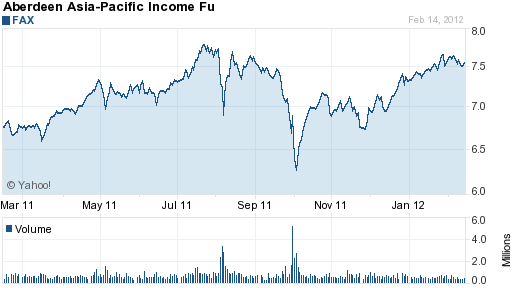3 Indicators Every Municipal Bond Investor Needs To Know
Post on: 9 Июль, 2015 No Comment

3 Indicators Every Municipal Bond Investor Needs To Know
September 19, 2013
The municipal bond market is estimated to be approximately $3.7 trillion in size, according to the Municipal Securities Rulemaking Board. making it one of the largest securities markets in the world. Whether involved through exchange-traded funds ( ETFs ) or direct investment in muni bonds, investors should regularly monitor their positions to ensure their safety, particularly after Detroit s troubling default on its general obligation ( GO ) bonds.
In this article, we ll take a look at three economic indicators that all muni bond investors should know, and how these indicators can be used to make buy, sell, or hold decisions.
Local Employment Data
Municipal bonds are backed by taxation, in the case of GO bonds, or project revenues, in the case of revenue bonds. In the former case, the ability of a government to increase taxes to meet its obligations depends a lot on the health of its labor market. Citizens that are working and generating an income tend to pay more in taxes and contribute to government coffers, while high unemployment can spell trouble, as was seen in Detroit s deterioration.
The U.S. Bureau of Labor Statistics publishes regional and state employment and unemployment data on a monthly basis. With dates outlined in its Release Calendar. investors can track the unemployment rate in key municipalities and stay ahead of bearish trends. Quite simply, unemployment rates increasing faster than the national average are a bearish sign, while employment rates increasing faster than the national average are a bullish sign.
Here s an example of Detroit s unemployment rate versus the national average between July of 2010 and July of 2013, clearly highlighting the bearish trend ahead of its bankruptcy:
Housing Market Data
Aside from income taxes, the second largest source of income for many municipalities is property taxes, which depend largely on the housing market. Higher valuations for houses mean higher property taxes and greater revenues for a municipality. Conversely, a struggling housing market can quickly result in lower revenues that can have a negative impact on muni bonds, as was the case in some California municipalities following the housing market crash in 2008.
The U.S. Census Bureau publishes a number of different housing market indicators that muni bond investors can use to discern trends. For instance, New Residential Construction, New Residential Sales, and Building Permits all provide great insight into the health of the housing market in a particular region. Again, investors should watch for a municipality s performance relative to the U.S. averages when making investment decisions.
Here s an example of Detroit s sharp drop in building starts, which again shows that the municipality was facing problems well before 2013, based on Census data:
Click to Enlarge
State GDP Data
The best indicator of a municipality s health is its gross domestic product ( GDP ), which measures the market value of all officially recognized final goods and services produced in the state. In general, higher GDPs mean greater income per capita and higher tax revenues. The greater number of goods and services also improves sales tax revenues and other metrics that can help put municipalities on stronger financial footing over the long-term.
The U.S. Bureau of Economic Analysis publishes a number of different GDP data points for muni bond investors to consider. Muni bondholders should take note of the GDP by Metropolitan Area. which provides more specific data than statewide GDP. Local personal incomes can also be useful indicators for determining the strength of various municipalities, as incomes correlate to the amount of taxes paid and taxpayers ability to continue paying taxes.
Here s an example of Detroit s personal incomes, which had risen sharply in the past due to unionization, but fell sharply during the recession on a relative basis, providing yet another clue:
The Bottom Line
Economic indicators can be very useful when analyzing municipal bonds, particularly when looking at trends over a long period of time. In the case of cities like Detroit, deteriorating employment data, housing data, and GDP/income figures provided investors with ample notice before the government actually announced its bankruptcy.
Investors looking to analyze these trends can use the Federal Reserve Economic Data or other tools online to quickly compile charts based on publicly available historical data. These data points can be compared to U.S. averages in order to discern whether a municipality is in more trouble than its peers and ultimately a worse relative bet or holding.
In the end, muni bondholders should be mindful of these indicators when analyzing new purchases and tracking existing holdings.














